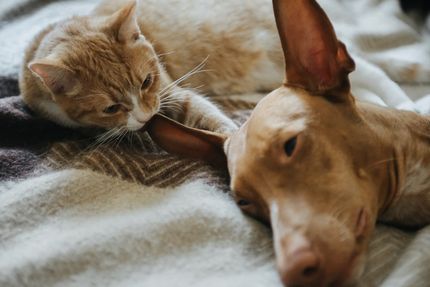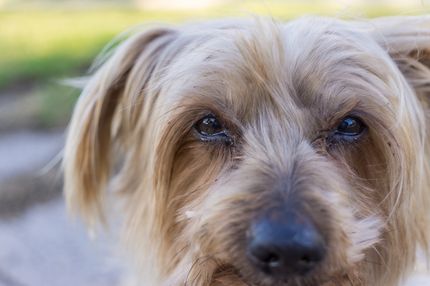Facts & Origin
New Labralound: The adorable mix of Newfoundland and Labrador Retriever.
The New Labralound is a unique mixed breed created by crossing a Newfoundland and a Labrador Retriever. This breed combines the best traits of its parent breeds and is known for its loyalty, intelligence and friendliness.
Although mixed breed dogs are often healthier than their purebred counterparts, it is important to watch for genetic diseases that are common in the parent breeds. It should also be noted that the appearance and personality traits of each mixed breed dog can vary greatly.
| Alternate Name | - |
| Origin | UK - Canada |
| Life expectancy | 8 - 14 years |
| Care requirements | low-maintenance - high-maintenance |
| Activity level | average |
| FCI group | not recognised |
| AKC group | not recognised |
| KC group | not recognised |
More Labrador Retriever mixes
More Newfoundland mixes
Attitude, character and temperament of the breed
Possible character traits of the New Labralound.
The New Labralound is a friendly, loyal and intelligent dog that loves to be part of the family. He is good natured and gets along well with children and other pets. His intelligence and eagerness to please usually make training an enjoyable experience.
Character
Genetically predisposed diseases
Some of the health concerns that can occur in New Labralounds are:
Hip and Elbow Dysplasia: These can occur in either parent breed and cause pain and mobility problems.
Heart Disease: Newfoundlands are prone to certain heart conditions that can also occur in New Labralounds.
Eye Disease: Both parent breeds can be prone to various eye problems, including cataracts and progressive retinal atrophy.
Care of the New Labralound
Coat Care: The New Labralound has a thick coat that requires regular brushing to keep it healthy and clean.
Exercise: As an active breed, the New Labralound requires plenty of exercise and mental stimulation. Long walks, playtime and mental games are ideal.
Nutrition: A balanced diet based on the New Labralound's size, age and activity level is essential.
What does this mixed breed look like?
The New Labralound is a large dog with a shoulder height of up to 70 cm and a weight of 45 to 80 kg. Its dense, medium-length coat can range from black, brown to a combination of both, similar to its parent breeds. The eyes are often dark and expressive, while the ears are medium-sized and pendulous.
| Fur length | short - long |
| Fur | flat coated - |
| Ear shape | Triangle |
| Tail | lang - fanned out |
| Anatomy | rugged, massive, massive, hefty |
| Size ♀ | 55 - 69 cm |
| Weight ♀ | 25 - 55 kg |
| Size ♂ | 57 - 74 cm |
| Weight ♂ | 29 - 70 kg |
| Suitable For | Beginner, Blind people, Children, Seniors, Children |
Known Diseases
Hip dysplasia (HD)
Hip dysplasia (HD) is a genetic condition in dogs where the hip joint is not shaped properly. This leads to pain, stiffness and restricted movement.
Elbow dysplasia (ED)
Elbow joint dysplasia is a chronic disease complex of the elbow joint of fast growing dog breeds.
Eye diseases
Often occur with allergies and intolerances.
Overweight
Often, unfortunately, the dogs very much under excess weight. But the dogs themselves are never to blame!
Joint damage
In some breeds, joint damage can occur later in life, affecting the musculoskeletal system.
Gastric torsion
Gastric torsion is a disease in which the stomach rotates around its own longitudinal axis. The cause of the disease is not known.
Kidney disease
Symptoms of kidney disease in dogs: increased urination (polyuria) increased water intake. Inflammation of the mucous membrane of the mouth. Loss of appetite
Skin inflammations
Can be hereditary in certain breeds.
Vein diseases
Most venous diseases are of minor importance in the dog
FAQ
-
He usually has a friendly and affectionate personality, is intelligent and very bright. They are also very temperamental, curious and brave.
-
The New Labralound needs at least a medium-sized apartment, but preferably a house with a garden. The breed is very active and needs a lot of exercise and outdoors.
-
The average life span is 12 to 14 years.
-
Yes, he can be trained. He is intelligent, attentive and receptive to commands. However, it is important to have patience and invest a lot of time to ensure successful training.
-
Yes, regular grooming is important to maintain the health and well-being of the dog.





















